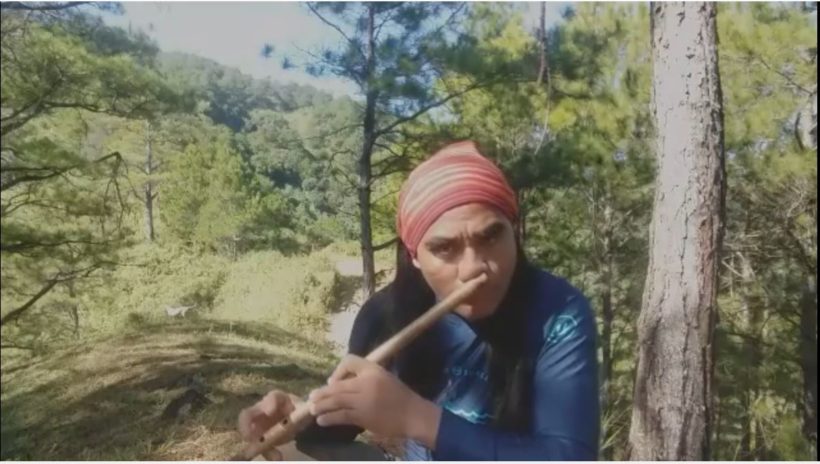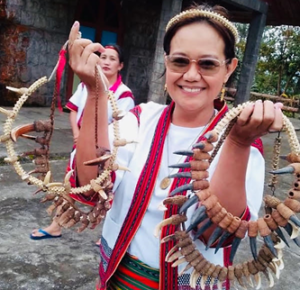INDIGENOUS CULTURE
by Genevieve Balance-Kupang
On Spirituality (Season of Creation, and Indigenous Peoples Month)
“Kullipan” is an Indigenous Tinggian chant that appropriates the sound of an eagle (Kuling) in flight, the “master of the skies.” What, with the eagle’s flair to ascend and soar to enormous elevations that no other creatures can. The eagle is a symbol of audacity, cleverness, grace, ingenuity, insight, patience, and vigor. Among the indigenous peoples, the eagle is bestowed an extraordinary admiration and esteem as this majestic creature is believed to be the Creator’s messenger. The eagles’ feathers are used in rituals among the natives. Among our brothers and sisters in the first Nations of the Americas, they believe that an eagle has a significant connection with visions and delivers their prayers to the Great Spirit in the Spirit world. The spiritual meaning of the eagle as another writer posits is that it symbolizes devotion, freedom, foresight, honor, hope, loyalty, and psychic awareness.
The prayer chant is an imitation of the sound of the Eagle in flight. In the video, Fr. Oscar Alunday, SVD, an indigenous Tinggian from Abra who belongs to the Society of the Divine Word chants a prayer of praise offered to God with the humble supplication for the Earth’s healing including a plea that we overcome the deadly covid19 virus.
The “Kullipan” was accompanied with the sound of the bamboo nose flute from the mountain of Umnap, Malibcong, Abra, the native place of the indigenous flutist Elmer Tadeo, also a Tinggian. Fr. Alunday wrote the lyrics and chanted the prayer in his office in Vigan City (Nueva Segovia) Ilocos Sur. It is noted that Christianity in the Cordillera came from the lowlands of Nueva Segovia.

Elmer Tadeo, an indigenous bamboo flutist from Malibcong, Abra.
This is part of the indigenous way of deep trusting and Christian hope that Kabunian (God) is in charge. He takes care of us. The soul’s gushing forth to praise God, the Source of life. The chant is a plea for His mercy and healing.
Kullipdi kullilipan,
Kullipdi kullipanan,
Kullipdi kullilipan,
Kullipdi kullilipan
O Apomi un Kabunyan,
Jakayo ud aw-awaghan,
Amod tun iyamanmi,
Amod tun panagjayawmi
(O God Kabunian,
we call on you,
full of thanks,
full of praises)
Isjungam tun pagilian
Pilipinas un ingghawan
Cordillera, Luzon, kanja Visayan
Bangsamoro kamindanaoan
(Look down on communites
Philippines our home
Cordillera Luzon and Visayas
Bangsamoro and the whole of Mindanao)
Itag-oymi Apo jomjommi,
Puso kan kajodwami,
Ta pavilgom ud angosmi,
Mansalaknib inggawanmi
(We raise to you Lord our thoughts,
our hearts and our spirits,
You strengthen our breath,
the Defender of our Lands)
Great Season of Creation,
Laudato Si mikanayon,
Aghasam pay jad nayama-an,
Ta Covid-19 kad manalan
(Great Season of Creation,
united in Laudato Si,
heal all the destructions,
vanish the Corona virus 19)
Innangmin Santa Malya,
Kiwijom pajapaja,
Man-igawom Ispiltu Santo,
Sagut Apo HesuKilisto
(Our dear Mother Mary,
gather everyone by your hands,
let the Holy Spirit stay,
the gift of the Lord Jesus the Christ)
amen amen amen
(Kullipdi kullilipan,
Kullipdi kullipanan,
Kullipdi kullilipan. Kullipdi ….
This is another piece of the “Ayuweng” (Cordillera rhythm and harmony) to celebrate the Indigenous Peoples Month this October, and close the Season of Creation last October 4, the Feast of St. Francis of Assisi, patron saint of ecology. The Season of Creation is celebrated for more than a month, beginning every September 1, and ends on October 4. There is an ongoing concerted plea and supplication for the Earth’s healing from the impact of the corona virus and aggressive development which destroys the source of livelihood and nature’s beauty; there is also the call for inclusion, focus on sustainable development, and combat the extraordinary challenges of climate change.
As we all know, St. Francis is known for his exemplary relation with the whole of creation and that is why he is respected, beloved and emulated not only by various Christian denominations, but by environmental advocates the world over. Peace with the rest of creation was his legacy and that is why every October 4, we close the Season of Creation in commemoration of his feast day. Like St. Francis who respected and cared for God’s creation, we support the call of Pope Francis to commit and live out the spirit of Laudato Si (Care of our Common Home). It is everybody’s obligation to do his or her part in caring for the only home we have. It is parallel with the United Nations launching of the UN Decade of Ecosystem Restoration. It is heartening to see many concerned government agencies, organizations, and Church groups calling and working to protect the environment and offering supplications for the healing of the earth.
In the prayer chant, inculturation is articulated as the worship to God is chanted in the local tradition with the symbolism of the eagle soaring to heaven to bring our prayers of petition to God for healing. Communicating the beauty that is ever ancient yet ever new in a culture is best expressed in the spirit of inculturation. Indigenous melodies and chants from the conception of a child to its birth always convey a prayer for long life and healthy living. Rites from birth to youth, through adolescence to marriage, and to one’s departure in death are full of life-giving symbolisms. Mastering the chants and understanding the cultural meanings of the chants, sounds and symbols give a space for a deeper appreciation and a profound expression of faith. One needs to learn, to know and study one’s culture courageously (s) to be able to share the wisdom and renew their strength and “soar on wings like eagles, they will run and not grow weary, they will walk and not be faint (Is. 40:31)”.
Let us continue to have a meaningful dialogue with God’s creation. Happy Indigenous Peoples’ Month. Matago-tago ya nasalun-at tako ngam-in (May we all live long, healthy lives)!
About the writer:


Genevieve Balance Kupang (Genie) is an anthropologist, consultant, researcher, and advisor to individuals and organizations engaged in working for good governance, genuine leadership, justice, integrity of creation, peace, the indigenous peoples, preservation of cultures, and societal transformation processes. She is a peace educator, author, interreligious dialogue practitioner, and resource person with a career in the academe and NGO.






